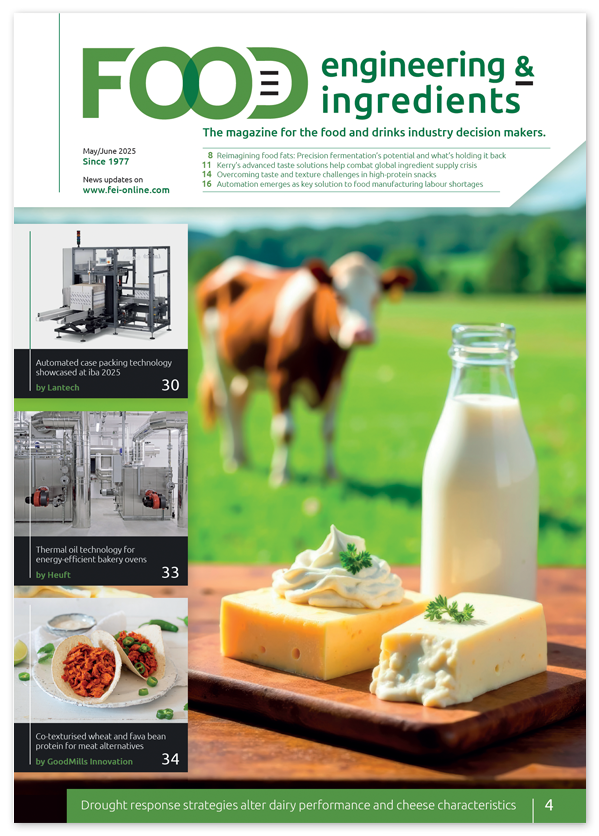Nutritional labelling and an opportunity for food manufacturers
Over the past two decades, nutritional labelling on food packaging has become increasingly important from a customer and a consumer perspective. It’s clear that consumer sentiment around improving health coupled with a food industry desire to support that agenda have combined to catalyse change.
There has been increasing global interest in nutritional labelling as a policy tool through which governments can guide consumers to make healthier eating choices. In many ways, the UK and Europe have led that charge .
A differentiated regulation picture between the UK and Europe and within Europe has been splintering between countries for the past decade. This has led to degrees of discord in the way nutritional information has been relayed to the consumer.
Prospects of harmonisation are keenly anticipated, despite challenges. The major issue for (Pan-European) food companies, especially those that operate across the UK and EU, is the chequer board of systems being used in the European Economic Area (EEA).
In Europe, there are several schemes operating in accordance with the Food Information to Consumers Regulations in the EU. These include the Nutri-Score (used in France, Belgium, Spain, Germany and the Netherlands), the Traffic Light scheme (UK/Ireland), the Keyhole logo (Sweden, Denmark) and the Choices Logo (Poland, Czech Republic).
Most experts agree that significant and imminent change is coming with legislators now firmly on the front foot. The UK’s High Fat Salt and Sugar (HFSS) scheme will now be likely be law by October 2023 (see below)
In Europe, a mandatory scheme in the EU will count as one of the more major changes in the food industry in recent years, one expected by the end of 2022.
UK overview
The UK Government just announced it will delay restrictions on multibuy deals and advertising foods high in fat, salt or sugar for a year as a result of the “unprecedented” squeeze on living standards.
Despite being planned for this October, the HFSS foods and drinks multi-buy promotion ban has now been pushed back by a full year. Rules banning multibuy deals on ‘unhealthy’ foods and drinks – including buy one get one free, ‘3 for 2’, and restricting free refills for soft drinks – will now be delayed until October 2023.
However, restrictions on where HFSS foods can be placed in-store will still go ahead in October 2022 as planned.
According to the Department of Health and Social Care officials, the deferral of the buy-one-get-one-free ban was to give ministers more opportunity to assess the impact on household finances as inflation and household bills continue to rise.
The UK Government HFSS guidance has been set out more clearly since the initial announcement in 2020. Its main points are as follows: Offers for unhealthy foods like ‘buy one get one free’ and promotions in prominent locations in stores and online will be restricted from October 2023.
Free refills of sugary soft drinks will also be prohibited in the eating-out sector. Restrictions will apply to medium and large stores. In addition, there will be restrictions on the Advertising / Promoting of HFSS products in the media and online.
The specific ban on TV adverts for HFSS products before the 9pm watershed and on paid-for adverts online has also been delayed to January 2024.
European regulatory changes To date in Europe, Front of Pack (FOP) nutrition labelling remains voluntary. However, according to the action plan for the EU’s Farm to Fork Strategy, the European Commission will submit a proposal for a harmonised mandatory scheme.
Nutri-Score is one of the preferred options, but some countries are opposed to this scheme arguing that it oversimplifies the nutritious value of products. Many argue that the co-existence of a range of FOP schemes in the EU market will lead to more market fragmentation and consumer confusion.
It’s accepted that mandatory nutrition labelling on the front of packaging will have a major impact for food manufacturers. This will likely include the redesign of most food packaging, for all concerned food categories, the reformulation of food products to improve the nutritional score without compromising taste and texture alongside the development of regulatory and technical knowledge.
Food manufacturer opportunity Certainly , there is opportunity to get ahead of these changes and start to address product and portfolio reformulation now. The role of product development partners to support the industry cannot be overstated. It’s their technical expertise to reduce sodium and sugar and add proteins and fibres that are central to Nutri-Score and Traffic light upgrades.
It is those front of pack solutions that has allowed Griffith Foods to build its reputation as a collaborator and innovator, upgrading customer portfolios and their scores.
The race on two counts is on for food manufacturers – both to modify their current ranges to avoid promotional bans and to lay down new conditions on how to manage the future products and portfolio vision.
There is no time to lose as the legislative landscape is fluid and first mover advantage will count for those that plan ahead.
More detail
An in-depth version of this white paper can be read/downloaded here:
https://bit.ly/3HIlADu
Contributor
This white paper is contributed by Griffith Foods
https://griffithfoods.com/




